Online Advertising Guide: What You Need to Know in 2024
Want to save time?
Summarize this article in seconds with AI
The landscape of online advertising in Hong Kong is rapidly and constantly evolving. In response to technological advancements, changing consumer behaviours, and the post-pandemic economic environment, brands need to keep themselves updated on the latest practices to find success in modern advertising. To do that, we need to understand the current state and future trends of digital advertising Hong Kong and explore its significance, ad types, impact, and costs.
The online advertising market in Hong Kong has been experiencing significant growth and changes, which are important for understanding the costs and strategies involved. As of 2020, the total revenue from digital advertising in Hong Kong was HK$6 billion, with predictions to rise to HK$8.58 billion by 2025, indicating a compound annual growth rate (CAGR) of 6.9%. This growth trend is driven by a shift towards mobile advertising, which is projected to grow at a 10.8% CAGR, compared to a slower increase of 3.1% CAGR for non-mobile online advertising revenue.

Source: South China Morning Post
Mobile ad revenue, which made up 45.5% of total revenue in 2020, is expected to rise to 54.6% by 2025, with video display being the fastest-growing sub-segment at a 20.4% CAGR. This indicates a shift from traditional search and display towards video advertising.
Additionally, the overall digital ad spend in Hong Kong recorded a 4% year-on-year increase in the third quarter of the year, with a total spending of HK$7.5 billion. This growth was seen across various digital media, with Instagram recording the most year-on-year increase of 41%, followed by desktop (24%), social media (12%), and mobile (7%).
So how do we navigate through this growing presence of online advertising and stay on top? First, we need to learn more about the online advertising landscape in Hong Kong and its impact. Let's get started!
Quick jump to:
Digital Advertising Hong Kong
- E-commerce and Digital Transformation: Hong Kong's market has seen a significant shift towards e-commerce, especially in the wake of the COVID-19 pandemic. Retailers have been pushed to move online due to a continuous decrease in year-on-year sales for physical stores. This shift is influenced by high levels of smartphone, internet, and banking integration in Hong Kong, creating a ripe environment for online commerce and advertising.
- Online-to-Offline (O2O) Model: The O2O model is increasingly being adopted by Hong Kong businesses. This model involves integrating online platforms with traditional brick-and-mortar operations, providing customers with a seamless shopping experience. The model also facilitates 24/7 operation, giving businesses a competitive edge. A real-life example of the O2O model in Hong Kong is HKTVMall, an online shopping platform that integrates with physical "HKTVMall O2O Shops" for order pickup and additional in-person shopping experiences. Customers can shop online and collect their purchases at these physical locations, providing convenience and bridging the gap between online and offline retail.
- Payment Methods in E-commerce: The preference for credit cards and digital wallets for online transactions indicates a trend towards diverse and digital payment options which physical stores do not necessarily provide.
- Cross-Border E-commerce: A significant portion of Hong Kong's online consumers purchase from international markets, highlighting the importance of cross-border e-commerce. This aspect of the market offers opportunities for local businesses to expand their reach globally.
Impact of Online Advertising
- Reach and Audience Targeting: Online advertising platforms like YouTube, Instagram, and Facebook Messenger have substantial user bases in Hong Kong. The wide reach of these platforms allows advertisers to target a large and diverse audience, making online advertising an essential component of any marketing strategy.
- Adaptability and Real-time Analytics: Online advertising gives the ability to adapt campaigns in real-time based on consumer responses and analytics. This adaptability ensures that businesses can optimize their advertising strategies for maximum effectiveness.
- Cost-effectiveness: Compared to traditional advertising methods, online advertising often offers a more cost-effective solution, especially when targeting specific demographics or interests. The ability to track ROI and adjust campaigns accordingly further enhances its cost-effectiveness.
Types and Costs of Online Advertising
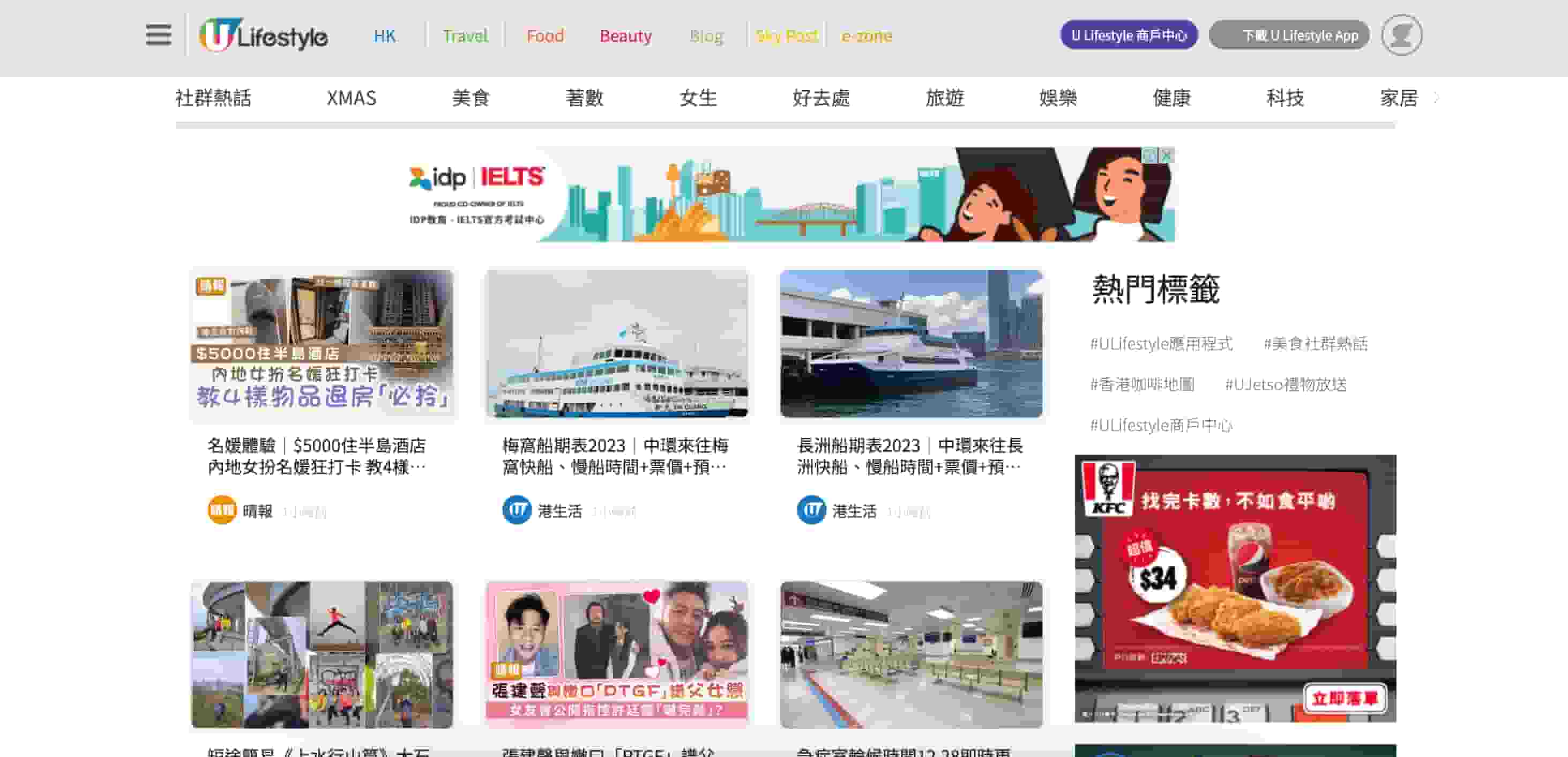
Source: ULifestyle IELTS and KFC Display Ads
- Display Ads: These ads appear on websites, apps, and social media platforms. They can range from simple banner ads to more interactive multimedia ads. The cost varies based on factors like ad size, placement, and the website's traffic. For example, an online newspaper display ad in Hong Kong can range from HK$150 per CPM (Cost Per Thousand Impressions) to HK$20,000 per week.

Source: Bellanpallhk
- Social Media Advertising: Platforms like Facebook, Instagram, and YouTube offer extensive targeting options, including age, location, interests, and more. Costs vary greatly depending on these factors and the desired reach and frequency of the ads. The average spend can range from HK$100 to HK$1,500+ per day or up to HK$46,000 per month.

Source: Google
- Search Engine Marketing(SEM): This involves paid advertisements on search engines. The PPC model is commonly used, where costs are incurred each time a user clicks on an ad. SEM is effective for driving targeted traffic to websites. Again, there is no one-size-fits-all when it comes to online advertising costs. It can range from anywhere between HK$2,000 to HK$80,000, depending on budgets, goals, and such.

Source: MYPROTEIN
- Email Marketing: While often overlooked, email marketing remains a powerful tool for reaching and engaging with customers within the world of digital advertising in Hong Kong. Costs are typically associated with the email marketing service provider and depend on the size of the mailing list and campaign complexity. For instance, a popular email marketing platform, Brevo, offers these packages with corresponding features(in USD):
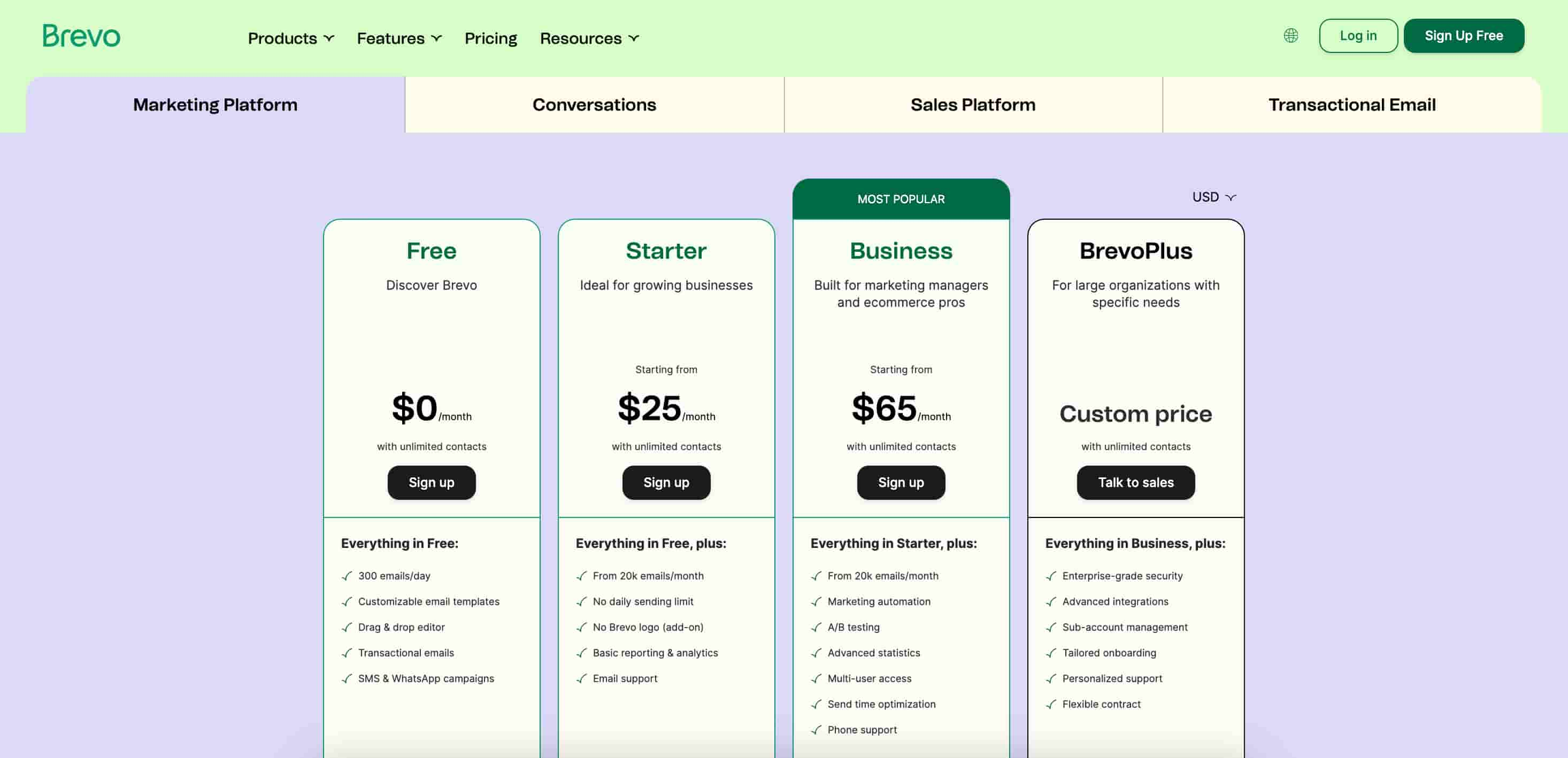
They offer an unlimited amount of contacts across packages but the real costs vary depending on how many emails are sent out per month and the availability of other functions. Most email marketing platforms can be seen operating similarly based on packages.
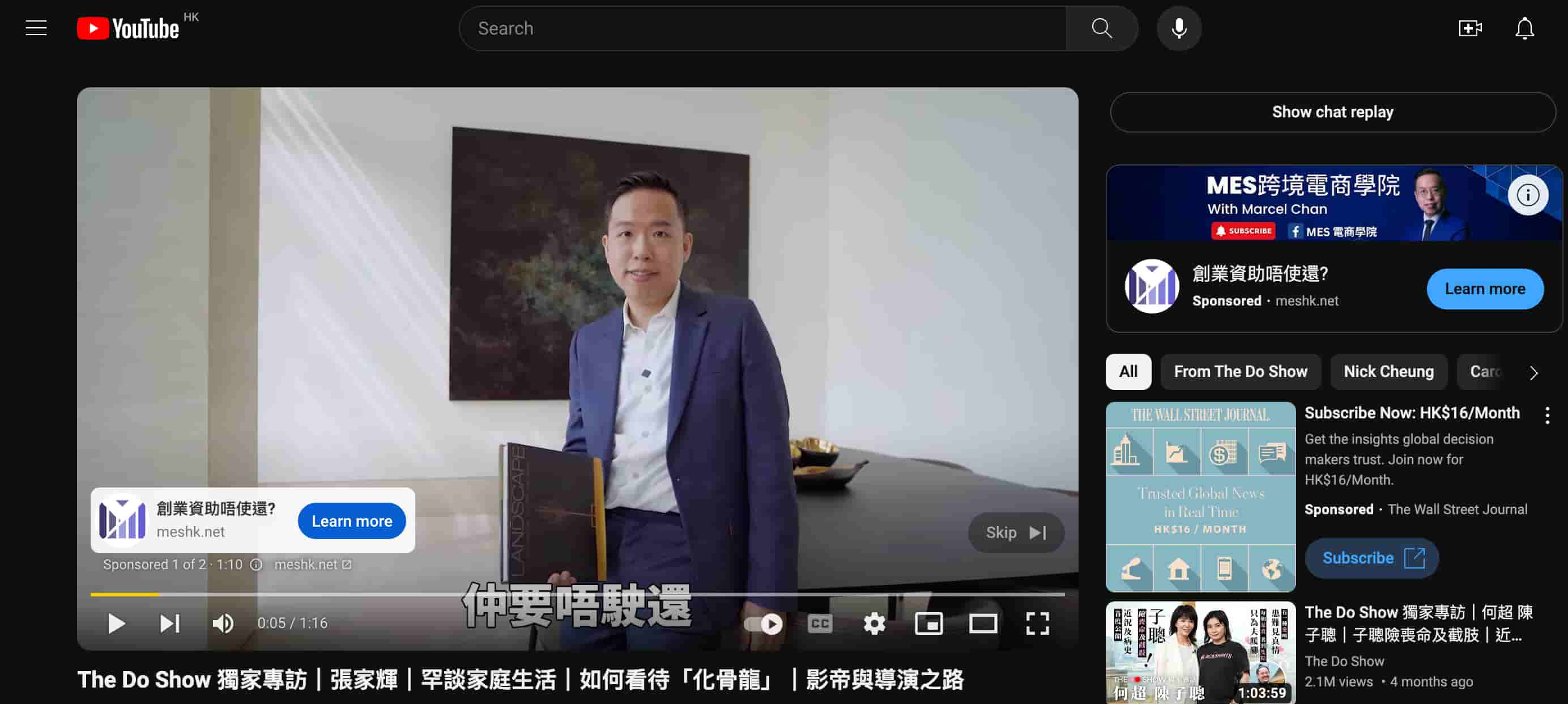
Source: meshk.net via YouTube
- Video Advertising: This involves using video content to promote a product or service. It's especially popular on platforms like YouTube, Facebook,and Instagram. Video ads can be more engaging than traditional display ads and often have higher conversion rates. The cost can vary based on video length, quality, and the platform where it's hosted. Even just within YouTube, there are different forms of video ads such as In-Feed Ads, Skippable and Non-Skippable Ads, and Bumper Ads. According to Influencer Marketing Hub, the average cost per view is HK$0.12 to HK$0.23. Meanwhile, a 100,000 view count is roughly to be estimated at HK$15,600.

Source: stxph.h & Dior
- Influencer Marketing: This type of advertising uses individuals with a significant online following to promote products or services. Influencers can be found on various social media platforms and are often chosen for their relevance to the target audience. Costs depend on the influencer's reach and engagement rates. Generally, you can expect a wide range from HK$700 to HK$78,000, from micro to macro influencers. In a celebrity case, it can costs anywhere up to a whopping HK$7,800,000.

Source: Wiskii via Facebook
- Remarketing/Retargeting: This strategy involves targeting ads to users who have previously visited your website or used your app. It's a way to re-engage potential customers who showed interest but did not complete a conversion. Costs are usually based on the number of impressions or clicks, similar to PPC advertising. The cost structure and average are dependent on the platform that is used.

- Affiliate Marketing: This is a performance-based advertising model where businesses pay commission to external websites for traffic or sales generated from their referrals. This is common in the blogging and influencer spheres. Costs are typically a percentage of the sales generated from the affiliate's marketing efforts, between 5 to 30%.
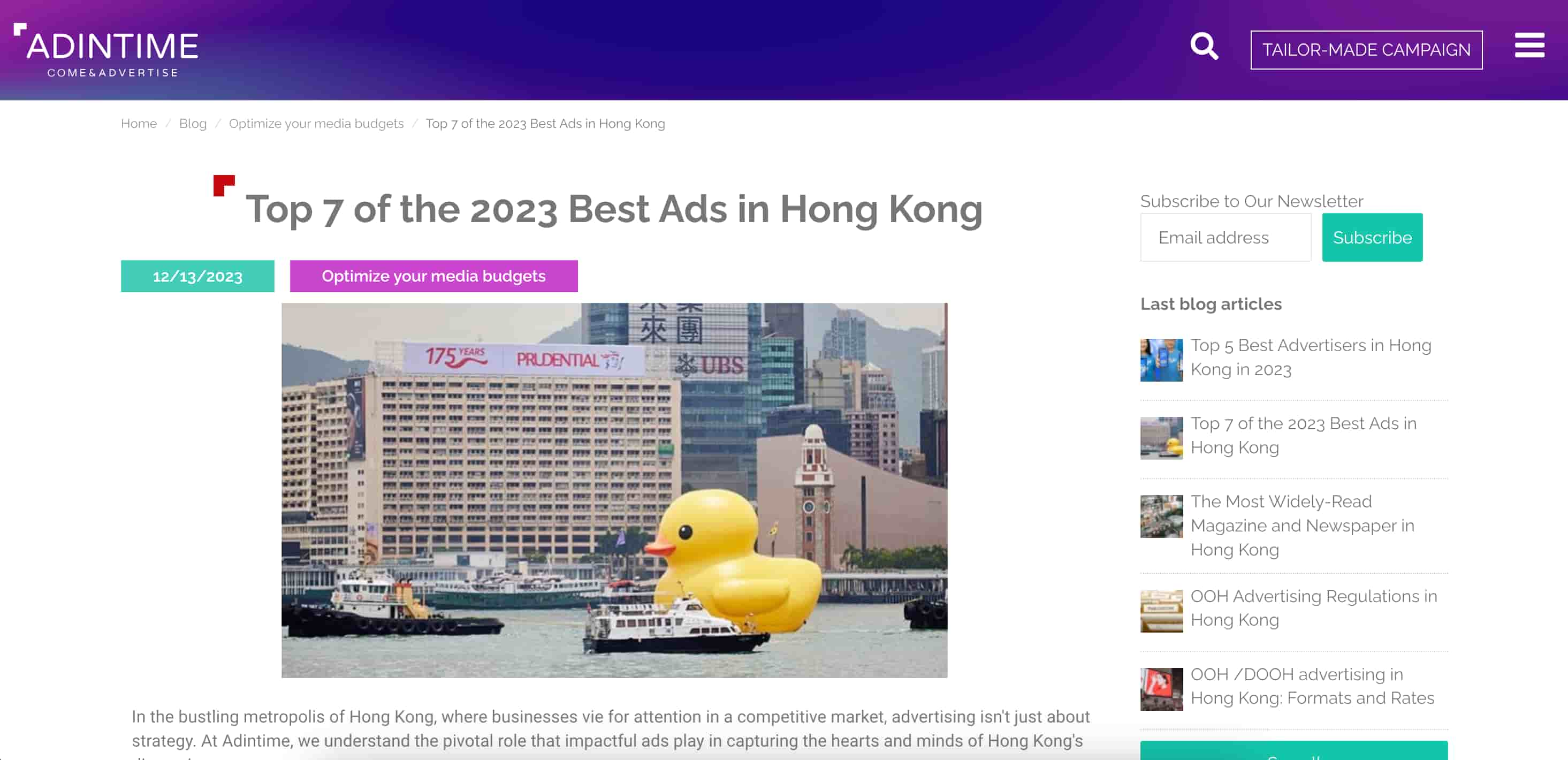
- Content Marketing: This strategy focuses on creating and distributing valuable, relevant, and consistent content to attract and retain a clearly defined audience. While not a direct form of online advertising, it's a powerful tool for building brand awareness and loyalty. Costs can vary greatly depending on the type and quality of content produced. You can also hire marketing staff to produce in-house.
Online Advertising Platforms: Availability and Popularity
With all the online advertising options available, which platforms should you choose to advertise your brand? Here's a breakdown of some of the most widely used platforms, each offering unique features and audiences:
Google Ads
Overview: Google Ads is the largest and most popular online advertising platform. It offers a range of advertising options, including search ads, display ads, and YouTube video ads.
Strengths: Unmatched reach due to Google's dominance in search and a vast network of partner websites. Advanced targeting and analytics capabilities.
Overview: A part of Meta’s advertising platform, Facebook Ads provides access to a massive and diverse user base.
Strengths: Extensive demographic targeting options, retargeting features, and a variety of ad formats like image, video, carousel, and more.
Overview: Also under Meta, Instagram Ads are perfect for brands looking to engage with a younger and visually oriented audience.
Strengths: High engagement rates, effective for brand awareness and visual storytelling. Seamless integration with Facebook Ads.
Overview: Ideal for B2B companies, LinkedIn Ads offer targeted advertising solutions to reach professionals and business decision-makers.
Strengths: Precise targeting based on job titles, industries, and professional interests. Effective for lead generation and brand positioning in the B2B market.
Twitter/X Ads
Overview: Twitter's advertising platform is great for real-time engagement and reaching a conversational audience.
Strengths: Good for trend-centric campaigns and brand awareness. Targeting options based on interests and hashtags.
Overview: As the world’s largest video platform, YouTube offers diverse advertising options, including skippable and non-skippable video ads.
Strengths: Wide reach, especially among younger demographics. Effective for engaging storytelling and brand demonstrations.
Overview: Targeting a younger demographic, Snapchat Ads offers unique ad formats like sponsored lenses and geofilters.
Strengths: High engagement rates among Gen Z and millennials. Creative and interactive ad formats.
Pinterest Ads
Overview: Ideal for brands with a strong visual appeal, Pinterest Ads can drive traffic and sales, especially for lifestyle and retail brands.
Strengths: Access to an audience interested in discovery and inspiration. Effective for driving website visits and sales.
Of course, these are just a few examples of the large number of platforms available for online advertisers. Each platform has its own strengths and caters to different objectives and target audiences. The choice of platform should align with your advertising goals, target demographic, and the type of engagement you aim to achieve. It's often beneficial to use a combination of platforms to maximize reach and impact.
Tips and Tricks in Online Advertising: Best Practices and Strategies
So how do we make sure we are maximizing the wonderful potential that these online advertising platforms give us? To stay ahead, it's essential to use a mix of best practices and innovative strategies. Here are some key tips and tricks that can help enrich your online advertising efforts:
Understand Your Audience
Segmentation: The oldest trick in the book! Divide your audience into segments based on demographics, interests, and behaviour to tailor your messaging.
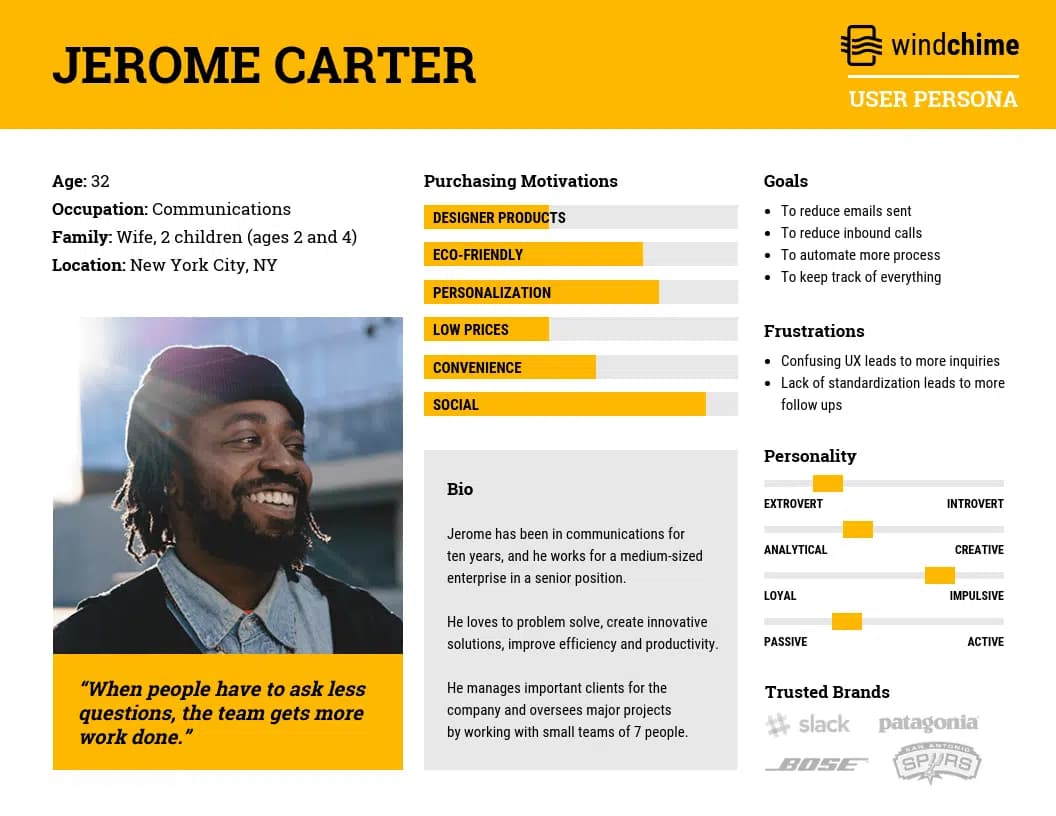 Example of a buyer persona profile by Venngage
Example of a buyer persona profile by Venngage
Persona Development: Create detailed buyer personas to understand and address the specific needs and pain points of your target audience.
Focus on Mobile Optimization
Responsive Design: Ensure your ads and landing pages are mobile-friendly, as a significant portion of online traffic comes from mobile devices.
Mobile-Specific Content: Develop content and ads specifically for mobile users, considering their unique browsing habits and preferences.
Leverage Data Analytics
Track Metrics: Use analytics tools to track key performance indicators (KPIs) like click-through rates (CTRs), conversion rates, and return on ad spend (ROAS).
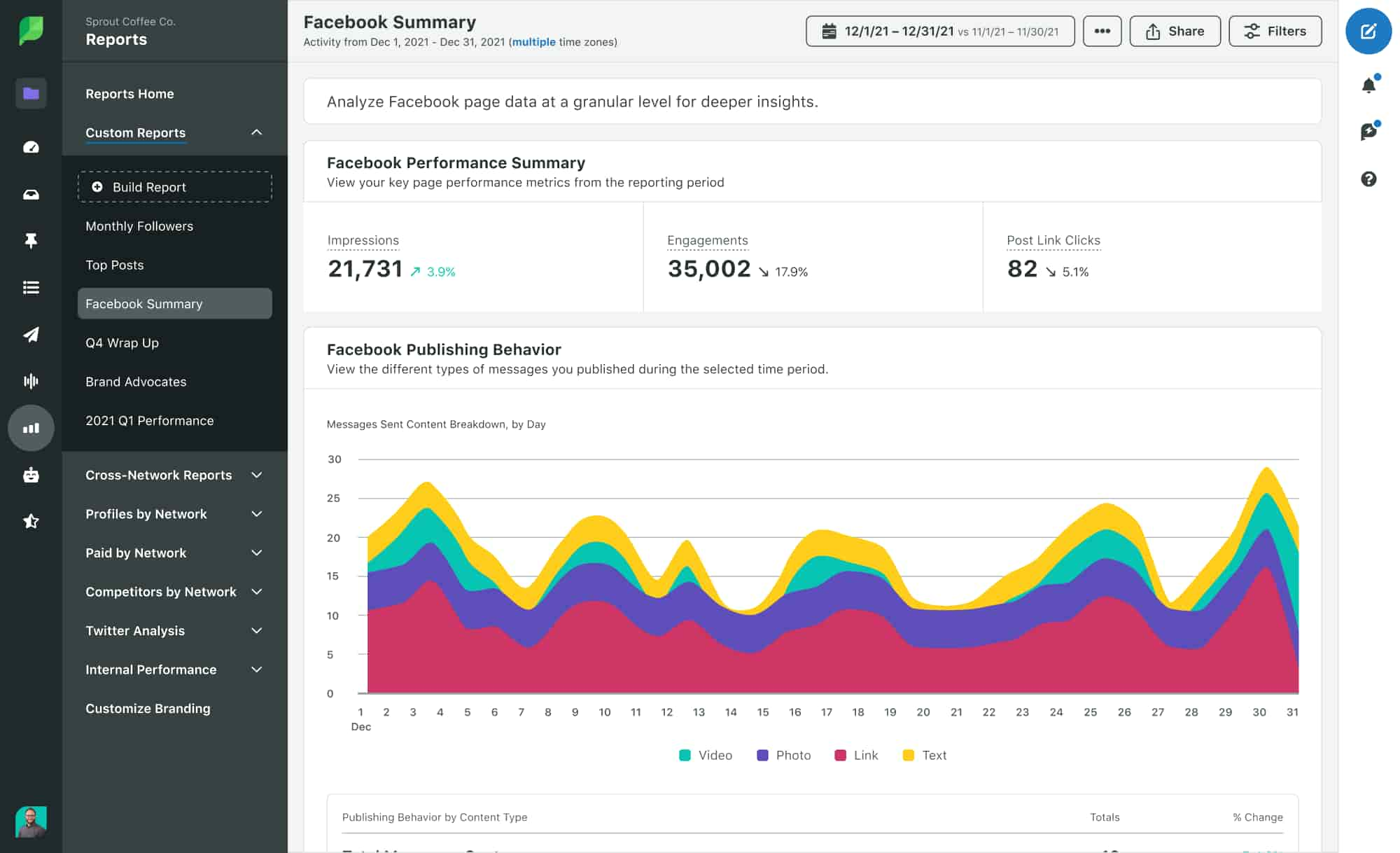
From Sprout Social - Social Media KPI Tool
A/B Testing: Regularly test different elements of your ads (such as headlines, images, and call-to-action) to see what resonates best with your audience.
Source: Omnisend
Use Visuals Effectively
High-Quality Images and Videos: Invest in high-quality visuals to grab attention and convey your message quickly.

Source: Inc. Magazine
Infographics: Use infographics to present complex information in an easily digestible and visually appealing format.
Embrace Storytelling
Narrative Ads: Create ads that tell a story, connecting emotionally with the audience and building a deeper relationship with the brand.
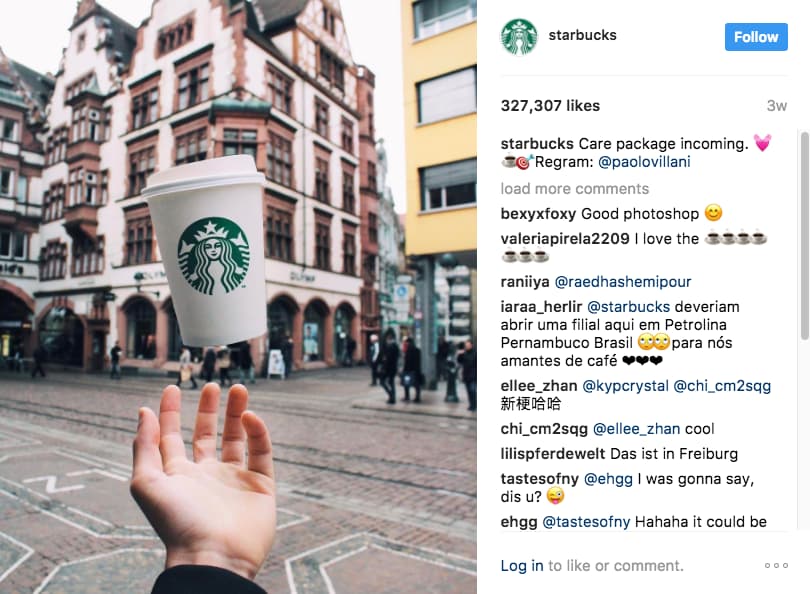
Source: SendPulse
User-Generated Content: Encourage customers to share their experiences with your brand, adding authenticity and trustworthiness to your message.
SEO Integration
Keyword Optimization: Integrate relevant keywords in your ad content to improve visibility in search engine results.
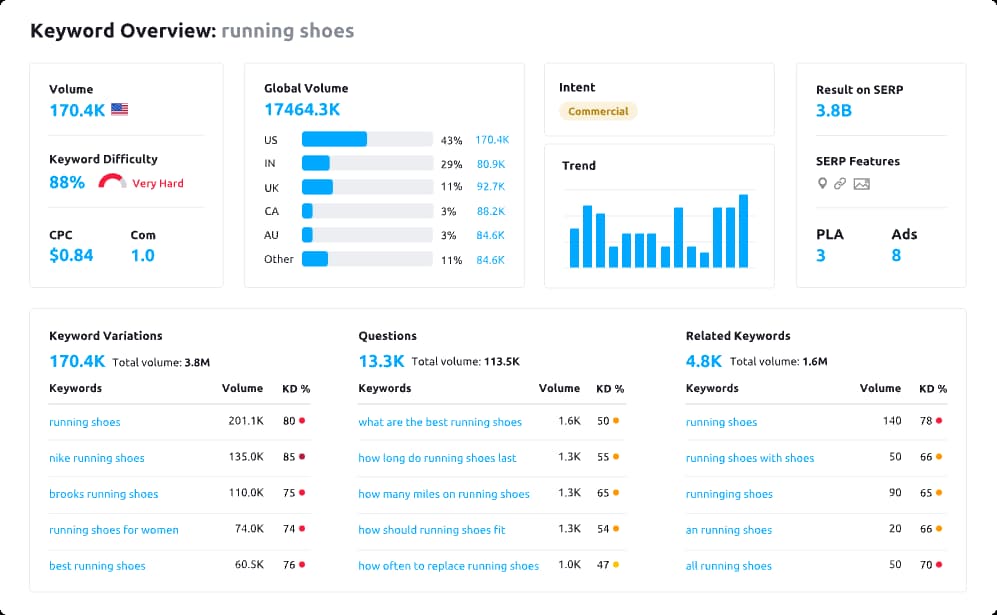
Tip: Use keyword research tools like Semrush to find the most appropriate and trending keywords for your business.
Quality Content: Focus on creating valuable content that addresses user queries and needs, improving your SEO ranking and ad effectiveness.
Engage in Social Media Advertising
Platform Selection: Choose the right social media platforms based on where your target audience is most active.
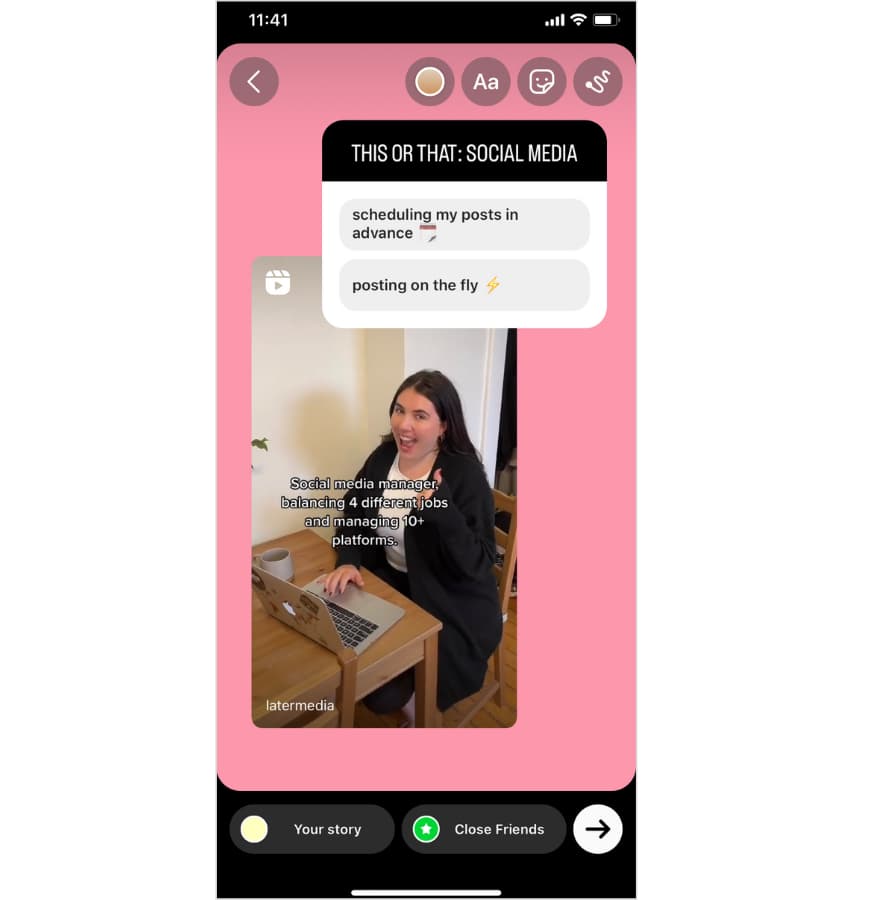
Source: Later.com
Interactive Content: Utilize interactive elements like polls, quizzes, and live streams to engage with your audience.
Retargeting and Remarketing
Customized Ads: Use retargeting to serve personalized ads to users who have previously interacted with your brand but haven’t converted.
Frequency Capping: Limit the number of times your retargeted ads appear to avoid overwhelming or annoying your audience.
Experiment with New Formats and Channels
Emerging Platforms: Keep an eye on emerging platforms and ad formats that might offer untapped opportunities.
Innovative Formats: Experiment with formats like augmented reality (AR) or interactive ads to create unique and memorable experiences.
Value Transparency and Privacy
Data Privacy: Respect user privacy and adhere to data protection regulations.
Clear Messaging: Be transparent about what you offer and the terms of any deals or promotions.
Online Advertising in Conclusion
Online advertising in Hong Kong offers diverse opportunities for businesses to expand their reach, engage with customers, and drive growth. Staying ahead of the latest trends and technologies is crucial for maximizing the potential of online advertising. By understanding and effectively utilizing various online advertising methods, businesses can achieve a significant competitive advantage in the Hong Kong market. And when in doubt, consult a professional to help on your online advertising journey!
Sources:
https://www.censtatd.gov.hk/en/EIndexbySubject.html?scode=590&pcode=C0000031
https://www.marketing-interactive.com/hong-kong-internet-advertising-whats-dominating-spend
 Cookie preferences
Cookie preferences

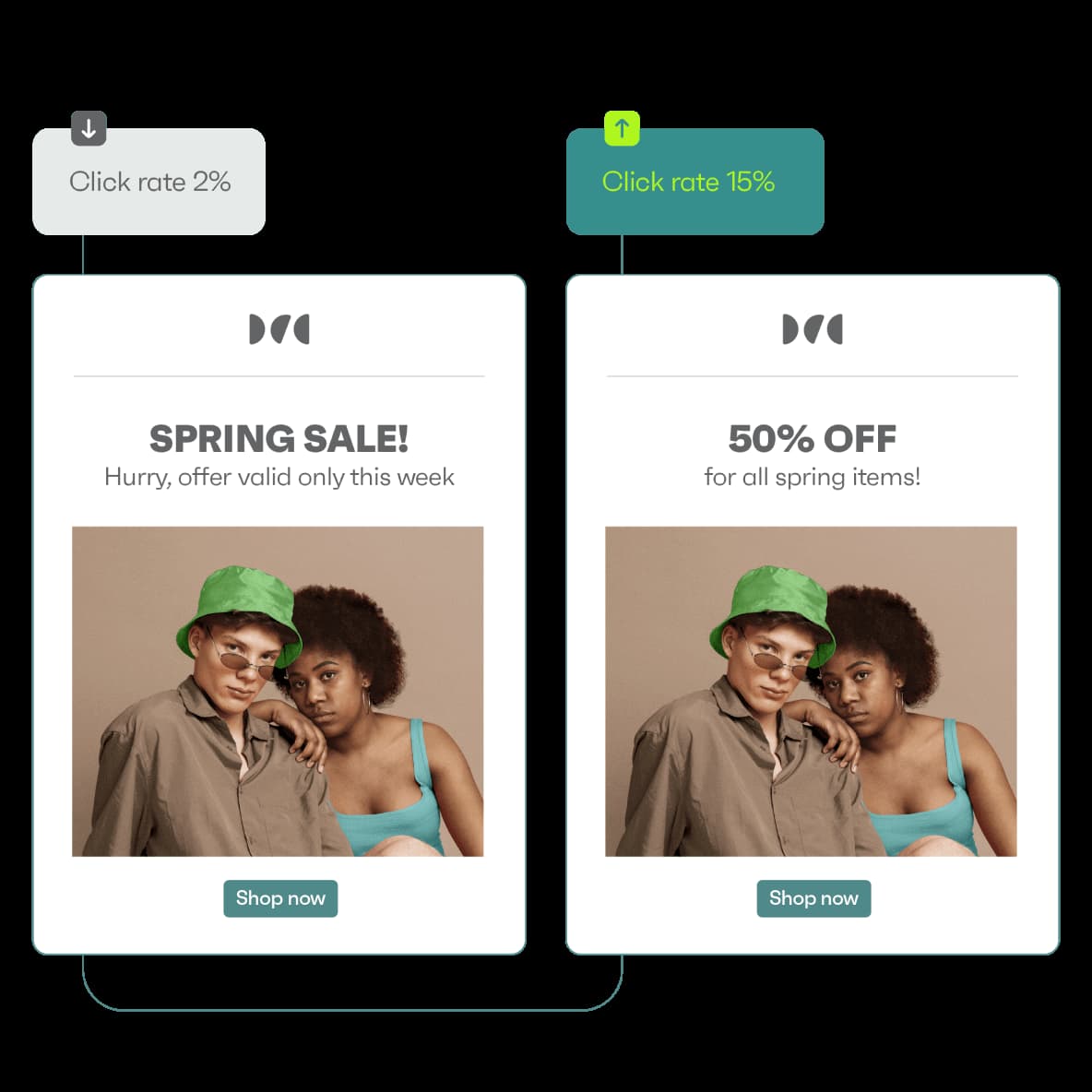







 Xiaohongshu Advertising Guide: How Can Hong Kong Brands Maximize Their Results?
Xiaohongshu Advertising Guide: How Can Hong Kong Brands Maximize Their Results?
 2x your advertising effectiveness: Master big data to optimize ad ROI
2x your advertising effectiveness: Master big data to optimize ad ROI
 Top 5 Best Ads in 2025 in Hong Kong
Top 5 Best Ads in 2025 in Hong Kong
 Hong Kong Outdoor Advertising Cost in 2026 | Adintime Report
Hong Kong Outdoor Advertising Cost in 2026 | Adintime Report
 Marketing Calendar 2026: Key Dates For Marketing Success
Marketing Calendar 2026: Key Dates For Marketing Success
 The Most Widely-Read Magazine and Newspaper in Hong Kong
The Most Widely-Read Magazine and Newspaper in Hong Kong
 Understanding YouTube Advertising Costs in 2025
Understanding YouTube Advertising Costs in 2025
 OOH /DOOH advertising in Hong Kong: Formats and Rates (2025 Update)
OOH /DOOH advertising in Hong Kong: Formats and Rates (2025 Update)
 How much does LinkedIn Advertising Cost? (2025 Update)
How much does LinkedIn Advertising Cost? (2025 Update)
 Press Ad Basics: Types, Formats and Ad Price
Press Ad Basics: Types, Formats and Ad Price